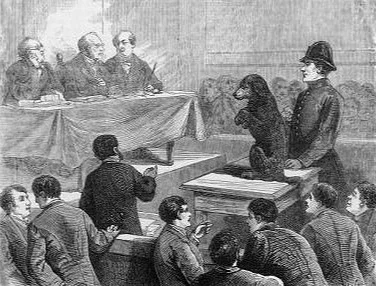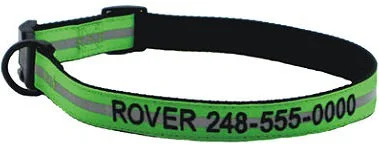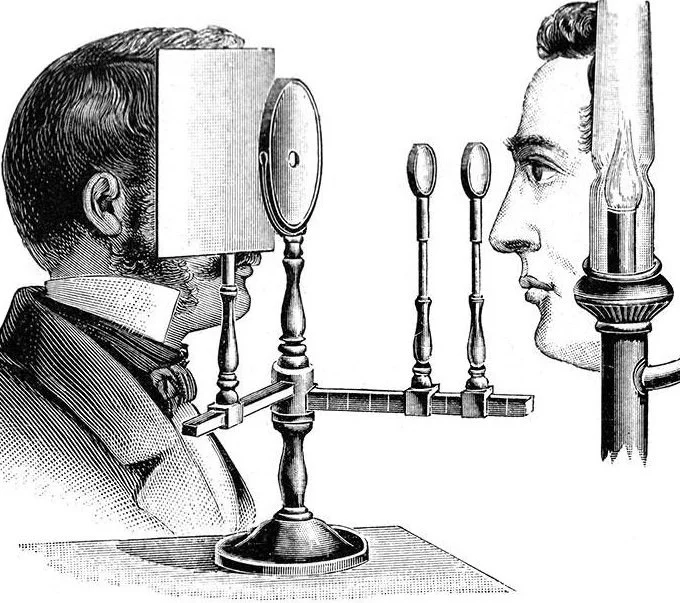anxiety… fear…guilt…
If you are experiencing the dog guardian’s worst nightmare, it’s important not to panic: there are many steps you can take to locate him, and a calm and thorough approach will become a critical asset. Swift action, coupled with aggressive neighborhood networking, will increase the odds of having your companion return home safely. The key is to get the information out to as many people and posted in as many places as you can, and to enlist the aid of family and friends in a coordinated search effort.
Before Your Dog is Lost…
advance preparation is critical.
Up-to-date
photos
You should have photos of your dog (both head and full-body profiles), no more than six months old: ideally, these should be digital, so that you can forward them electronically to newspapers, animal control officers or shelters, to your local printer, online pet-finder resources, or friends.
If you don’t own a camera, most cell phones are capable of producing surprisingly good photos, and can even be edited right in the phone, with minimal effort. To upload a cell phone photo to your computer: simply pull the wire from the charger (the boxy “plug”) which will reveal the USB that you connect to a port on your computer; access the “windows” or “folders search” function, find the phone on the list, and open the “DCIM” (“digital camera images”) folder which will have a subfolder that will show as “camera” and then, to “photos.”
You can also enter your E-mail address into the “contact list” of your phone (using the numbers as a letter-keypad, or select “ABC”), and forward the photo to your E-mail, from which you can then open the text message and and save the photo attachment to your computer.
Plan your shoot for how a picture will look laid out in a “lost poster”: ensure that your photos are sharp, well-lit, with an uncluttered setting free of distracting background elements.
Plan ahead: have photos when he has first had a professional grooming or “summer cut,” and during re-growth—especially for long haired dogs—as his “first look” appearance can change considerably. Consider that your dog may look different to others than you perceive him: when lost, he may be frightened and stressed, injured, or wet; so have on hand photos that provides reasonable detail about how he looks, particularly when he's dirty or un-groomed, since the missing dog rarely remains natty for more than a short time.
How well
do you really know my face?
How well do you know what your dog looks like... really? Take time to examine him closely, and write down markings or colorings that may, in fact, be distinct to him: turn over his paws and note the color of his pads (sometimes it varies from paw-to-paw)...
…where an oddly-shaped patch of color (or a beginnings of grey?) is, any bumps or scars from old injuries, illness or surgery, the hue (not color) of his eyes (or that stubborn, sleepy “third eyelid” on one eye…), a spot on his tongue or end of his nose, a slightly bent ear, a chipped tooth… a perpetually weepy eye (is it left or right?) or runny nose from allergies… Measure him so that you can provide specific and accurate information about his height and length, and know his current weight (but realize he may lose weight while lost).
The ability for you to provide specific or unique details may trigger recognition for an unfocused passer-by or overwhelmed police or shelter worker who might otherwise see your Labrador as just another “black dog.”
It’s further important because while lost, your dog’s general appearance may change considerably, owing to being dirty, because of weight loss, and perhaps most overwhelmingly, from unrelenting stress.
Collars & Tags.
Microchips.
Tattooing.
State Law(s):
Bear in mind that in Connecticut—and in most jurisdictions—dogs are required to be vaccinated for rabies, licensed, and registered with the state, and if allowed outside at all (even if on a leash) are required to wear a collar displaying the ID and rabies tags.
Identification “buys time”
The ID tag should have your name and a current phone number. Absent identifying information, dogs are often euthanized in municipal (or even private) shelters after a relatively short period: perhaps even immediately. Identification buys time: a move or change of contact info necessitates new tags immediately. Think ahead: don’t endure the mistake of assuming your indoor dog doesn’t need to wear a collar & tags: a small dog will end up slipping out the front door at least once in his life.
Consider that the number you caption should be one that will be answered promptly. That might mean a phone that isn’t actually yours.
ID tags should include: the word “REWARD” in capital letters on the first line; your city and state, your home & work phone numbers; and a friend or relative's phone number (with area codes: today, many area code exchanges are exhausted, and you must not assume someone checking a tag can assume the area code). Other practical ideas include reflective and glow-in-the-dark collars which dramatically increase the chances that
your dog can be seen at night.
Clip-on tags with QR code smart labels that can be scanned by any app-enabled Smartphone enable anyone who finds your pet to quickly access a cloud-based profile that can include not only your own, but other family or friend’s user-determined contact information, as well as important medical alerts, allergy information, and digital X-Rays.
Upgrades to a fee-based subscription service provides this simple “passive” search to send a real-time email or SMS text with a GPS map of the location where the scan took place.
The ability to identify your dog through license tags, a tattoo, or a microchip may represent his ticket home. Counties and municipal shelters will hold records of all license numbers, and chips are registered with national databases (see, however: discussion below). Many shelters will scan for a microchip when they won't roll a dog over to look for a tattoo.
Smartphone
scan tags
Embroidered collars
Consider a nylon web collar on which you can have your phone number embroidered: this may be helpful in the event that your dog does not want to be closely approached, as they can be read from a distance.
HOW MUCH DO YOU KNOW about…
Microchipping?
About the size of a grain of rice, glass-encapsulated (non-permeable) microchips (transponders) are injected without anesthetic under the skin (usually between the shoulder blades) by your veterinarian: typically, your dog won't be aware the procedure has occurred. Some manufacturers produce (declared) bio-compatible (FDA-approved), polymer (plastic) devices.
The pet identification microchip has a 9, 10, or 15 digit number embedded into it that can be read by a hand-held scanner (see below). That number is entered into a database that identifies the chip vendor, who has access to your personal contact information: should your dog go missing and wind up with local animal control or at an animal shelter, they would only need to scan for the microchip to see that he is not a stray and would be able to begin the process to obtain information to reunite you.
Contrary to popular belief,
the transponder/microchip scanner:
(1)
doesn’t provide
guardian contact information; and
(2)
there is no single or national database
in the U.S.
The scanner is used to “interrogate” and check that the microchip is working properly: it uses a frequency-specific radio wave to (1) turn the (battery-less) microchip/transponder on, then (2) sends a signal to the chip, which, in turn, (3) responds by returning the number to the scanner.
A microchip will also remain as backup when a collar with a detachable safety-clip fulfills its design to release if your dog gets hung up during his wayward journey.
Today, the majority of animal control facilities, shelters, and veterinarians have and use the scanners when stray animals are brought in, (modern scanners are marketed as “universal,” although this can be problematic). It’s important to understand that a microchip itself does not store information, only a registration number.
As such, the company can only contact you if you have provided information about a changed address or phone number since registering the chip: you may forget about this when upgrading a cell phone, for example, and good advance preparation should include a repeating reminder set into your E-mail calendar (perhaps, at least every few months) to ensure that this information is up to date.
check and Update your microchip contact info!
The registries that maintain the chip numbers are ordinarily open 24 hours a day. Depending on the contract, some companies provide a more comprehensive service, such as E-mail networking, and pre-authorizing a financial limit in case your dog is found injured, or scanned in a veterinary facility.
Any registry will maintain your contact info permanently, and most will allow updating without cost.
Contact information should preferably include a cell phone number that you can answer any time of day (or when you are outside looking for him), as well as a back-up contact as a safeguard. Costs of microchipping have dropped dramatically and are generally quite modest, enfolding the vet fee to inject the chip, and one to have your information entered into the parent company database (see: “microchip registration databases,” below). Today, many states, municipalities, and private charities or rescue groups operate programs to subsidize these costs as a community service: contact your town hall or access a state website for contact information.
Although rare (perhaps most common in an especially athletic dog), a microchip/transponder might migrate somewhat, slipping towards his shoulder, elbow or chest. Have your vet scan your dog annually and they’ll be able to reassure you; however, as ordinary practice, conscientious veterinary clinics or shelters will broadly scan a dog's entire upper body.
Competing Standards:
(you probably
weren’t aware of)
125 kHz
(9 - 10 digit numeric)
134.2 kHz
(15 digit alphanumeric)
—ISO Standard
128 kHz
(10 digit numeric)
The process is not foolproof. In the US, there are three different types of RFID (radio-frequency identification) microchips/transponders on the market.
The first 9-10 digit microchip (125 kiloHertz)[1] that became popular has been in use since the 1990s. The second type (134.2 kHz)[2] is the ISO (International Organization for Standardization) compliant 15-digit chip (11784/11785), which is the frequency that Europe, Canada, Japan, and most parts of the world are already using and that the US (currently for large animals) have been endorsed for use in the United States by the American National Standards Institute (ANSI), for “companion animals” for badly-needed consistency.
In this system, 3 digits of the identification number designate either the 3-digit country code of the country in which the animal was implanted; or the 3-digit manufacturers code (as assigned by the International Committee for Animal Recording (ICAR).
Today, however, more than 90% of US chips are still 125 kHz (non-ISO compliant): the resistance tied to cost of changing over. A third type, (128 kHz)[3] is uncommon, as it has only been distributed by the American Kennel Club.
The American Humane Association estimates that 1 of 3 pets become lost at some point in their lifetime, that close to 10 million dogs and cats are lost or stolen in the US every single year; and, according to the Coalition for Reuniting Pets and Families (2005), less than 23% of lost pets in the US are reunited with their owners. Even in a shelter situation—where effort is generally taken—only 30% of dogs and 2-5% of cats find their way home again. In contrast, 47% of lost dogs are reunited with their families in the United Kingdom, where a more efficient database is realized using ISO-standard chips.[4]
The scanners (interrogators) themselves are expensive, and few shelters or rescue organizations would be able to afford both types (or all three), and so, a shelter that can’t read the microchip implanted in your dog means that it would be useless in that situation.
The two major vendors of 125 kHz transponders and readers for pet ID in the United States are AVID Identification Systems (Avid Friend Chip™/PETtrac™ registry) and Digital Angel (Home Again®). Voluntary cooperation between manufacturers has failed, and further, market competition and intentional incompatibility between manufacturers' microchips and scanners have led to controversy and legal conflict: the companies generally don’t want a “universal” scanner to be compatible with their equipment, as a means to ensure sales of their own scanners. This is accomplished by encrypting the frequency at which the microchip is read: a shelter using a scanner lacking the correct algorithm cannot decode the microchip radio signal emitted by the microchip.
“Forward-reading” scanners detect 134.2 kHz (ISO standard) microchips, but will not detect 125 kHz or 128 kHz (non-ISO standard) microchips. Universal scanners, (called “forward-and-backward reading” scanners), can detect all three frequencies. The main advantage of universal scanners is the improved chances of detecting and reading a microchip, regardless of the frequency, assuming that the specific algorithm can be interrogated.
Problems arise when a shelter or vet interprets “universal” incorrectly, assuming that if their scanner picks up three different brands of transponders, it is “universal.” However, some brands are on the same chip frequency, and some make several different types of microchips. Unfortunately, many organizations are unknowingly still using non-universal (forward-scanning or backward-scanning) devices, which means they are missing chips and, therefore, unable to reunite lost pets with their families.
Subsequent to a number of high-profile legal skirmishes focused on patent, advertising, and anti-trust law among the global manufacturers, courts have essentially validated the 125 kHz system for use in the US (2006): substantially based on the numerical advantage of sales.
To help alleviate the frustrations that arise from incompatibility, the 2005 Agriculture Appropriations Bill (HR 2744: advocated by the American Veterinary Medical Association [AVMA], and signed by President Bush in 2006) ordered a universal approach, and charged the Animal and Plant Health Inspection Service (APHIS) with developing rules for standardizing microchips.
Although its original language did include a specification for the ISO 134.2 standard, ultimately, the legislation does not specify a standard, nor, even that an ISO standard be used. Rather, it supports “the microchipping of pets for identification under a system of open microchip technology in which all scanners can read all chips.” A (July 2007) USDA-APHIS report to Congress noted that The Animal Welfare Act of 1996 does not authorize the USDA-APHIS to regulate private pet ownership or retail business, and as such, the organization concluded that it cannot mandate a national standard for pet microchips or scanners.
At the least, however, the agency can support standardization within the facilities or entities that it is charged with regulating, which include animal exhibitors and animal dealers.
The problem with
Microchip Registration Databases
The US remains distinct in that unlike other countries, implantation and registration of transponders are generally separate processes, with the lack of a centralized database resulting in low efficiency in reuniting lost pets with their families. Research has indicated that less than 60% of microchipped animals were “registered” when shelters attempted to interrogate the chips, and further, that many were rendered useless because the contact information was incorrect.
Since 2009, a number of independent microchip registries have launched online, but many of these registries are stand-alone and/or commercial (fee-based) products that are not linked to manufacturer (or vendor) registries. With financial motivation information, sharing may be limited. Some families choose to register their animals in multiple registries or with the manufacturer as a “safety net.”
In response, The American Animal Hospital Association (AAHA) created the AAHA Universal Pet Microchip Lookup Tool, a centralized search engine which allows users to enter a microchip code and directs them to (among the six US-based) participating microchip registries associated with that microchip's number and the microchip's manufacturer[5], as well as the date the chip was last updated.
Important Links:
Check to see if your dog’s chip is recorded:
American Animal Hospital Association (AAHA) Universal Pet Microchip Lookup
Learn which databases feed into the AAHA Universal Pet Microchip Lookup:
Participating Microchipping and Pet Recovery Services
Free Pet Chip Registry:
feeds data into the AAHA Universal Lookup Tool.
PetMaxx:
the international database that searches more than 30 international pet recovery databases.
It’s important to acknowledge a common misconception, that the microchip is automatically registered to you when you adopt a dog. In fact, your pet’s microchip may still be registered to the shelter, or even to the previous owner. It could even still be unregistered after all this time if the shelter never registered it on your behalf.
MIcrochips and Cancer?
To date, no statistically valid experimental studies involving microchip implants in dogs has been undertaken.
The transponders are considered “bio-compatible,” and there is no persuasive evidence that microchipping is linked to subsequent development of cancer; the only “long-term” (3 year) dog-focused study involved only 9 subjects (Murasugi, 2003).
In 1996, the British Small Animal Veterinary Association (BSAVA) released findings of its microchip adverse reaction program summarizing reports of 3.7 million UK pets (not exclusively dogs), and as of 2009, only 2 tumors had been reported. A committee of The World Small Animal Veterinary Association (WSAVA) has concluded that there is no reasonable association, and seeks informational reporting from professionals. (Critics might fairly argue that adverse event reporting of any type by veterinarians is low).
There is, however, concern that microchips may “reflect” ubiquitous wireless local radio signals, (WLAN) and that they would thus contribute to excessive exposure to such signals. To date, the potential health hazards from the microwave signals have not been scientifically validated, as electromagnetic frequency (EMF) exposure is so widespread today, it's virtually impossible to conduct controlled population studies because no population is truly unexposed or unaffected. This prevents the identification of a “control group” to conduct research.
Light your night!
A “flash mode” LED collar
can be additionally useful to keep track of your dog during daylight
off-leash walks.
Light-emitting diode (LED) flashers that quickly clip to your dog's collar are especially helpful in keeping track of (or finding him) after dark. Reasonably priced, and available as discs or “icicles,” many can be seen from significant distances: a good practice is to use them any time within an hour or so of dusk. The LED is powered by a small 3-volt lithium coin-battery, providing up to 20 hours of light in static mode, or 25 hours in flashing mode.
Newly available LED collars, harnesses, vests and leashes—including those with reflective stitching—can be seen up to 1,000 feet (with claims up to a mile) away. Today, manufacturers have moved beyond merely “coin batteries”—which do hold charge for lengthy periods—with more environmentally friendly offerings that are replenished with a quick-charge USB cable that can be charged from any device, offering up to 10 hours of “strobe”/flashing light on a single 1-hour run-up;
and even solar-charge units.
The range of offerings means you don’t have to settle: LED dog collars come in a few different styles, some have 360-light LED strips that surround the entire collar, while other units have LED lights only on certain sections that may, depending on the dog, leave inconvenient “blank spots.” Examine choices carefully: most importantly, choose a model that does not place the batter pack or buckle opposite to the clip loop: this puts put the battery needlessly pressing against the front of his neck. The battery size and weight can be important considerations for small dogs.
While no collar will be completely “waterproof” such that it would withstand being submerged in water, many are at least water resistant enough to hold up in light rain.
Tatoo-ing:
The Federal Pet Theft Act
If tattooing is offered anywhere in your area, you can have your dog tattooed on the inner thigh. A tattoo is likely the most effective means of identification available. Then, you can register that tattoo with a national organization such as National Dog Registry, since an unregistered tattoo cannot be traced back to you. Any police department can trace a tattoo that is identified as a state drivers' license (remembering again: that you should then provide follow-up information upon a move out of state). The brief process does not ordinarily require anesthetic.
Tattooing is a visible ID that works: no scanner is needed to read it. Some families feel more comfortable with the process than simply microchipping, since, under federal law, research labs cannot accept a tattooed animal.
In 1990, the 1966 Animal Welfare Act [6] (Agriculture: the first federal law in the US regulating animals in research) was amended to include The Federal Pet Theft Act (7 USC 2158, Ch. 54, §2158), which mandates a five-day holding period for shelters before selling a pet to a “Class B dealer” (including brokers, and operators of an auction sale); or, any “random source” organization (Connecticut also prohibits the process via statute: Ch. 45, §22-351). This is to help prevent stolen pets from being too-quickly sold to research companies—as many municipal shelters do—and to allow the family (deemed: “owner”) to reclaim the animal.
The Act had it’s roots in a 1965 dog-napping case that ultimately exposed the sordid practices through which research laboratories obtained animals from thieves moving animals across state lines. The topic garnered unusual and unified public attention following an exposé in Life Magazine, stirring a broad panic over the theft of pets for biomedical research.
The 1990 amendment was passed to ensure that all companion animals used in research facilities were “legally” obtained, and also to help protect pet owners from having their pets stolen for research purposes. The entities to which the Federal Pet Theft Act applies include all public and private animal shelters, as well as any research facility licensed by the federal Department of Agriculture: “[i]n the case of each dog or cat acquired… such entity shall hold and care for such dog or cat for a period of not less than five days to enable such dog or cat to be recovered by its original owner or adopted by other individuals before such entity sells such dog or cat to a dealer.”
To prevent fraud and pet theft, “B” dealers are thus allowed to obtain dogs and cats only from other licensed dealers and from animal pounds or shelters. Under 9 CFR 2.132 - Procurement of dogs, cats, and other animals; dealers, “B” dealers are prohibited to obtain animals “by use of false pretenses, misrepresentation, or deception,” and are required to maintain “accurate and complete records,” including records on “[h]ow, where from whom, and when the dog or cat was obtained.” As such, appearing to adopt pursuant to a “free to a good home” offer would be considered illegal, because the adopter’s intent would not be legitimate.
While animals are often transported across state lines to camouflage their origin, and records falsified—“B” dealers often work with “bunchers” who do the actual stealing in a pet theft ring—the Act seeks to offer families modest protection in that a research facility cannot accept an animals absent certification that the animal has been held for at least five days by the shelter. As such, a family would have a cause of action against a shelter that is not in compliance with the Federal Pet Theft Act, even if the shelter is in compliance with its local laws.
“Radio-frequency” and GPS Tracking Devices.
Clip-on or collar-integrated tools to track lost pets are available in two types. High technology global positioning system (GPS) devices—similar to what you use in your car—use satellites to locate a tracker, and then transmit non-ionizing radio frequency data through a cellular network (assuming coverage is available), to a “receiver” (perhaps a phone), and as such, require monthly monitoring service fees. Many work with Google Maps that consumers are already familiar with. The frequencies travel in straight lines, and use satellites to bounce off one another for great distances; or, through Bluetooth/Wi-fi networks (which would be fee-free: although useful for distances of only about .8 mile, or 100 feet).
Single-dog outfits are available for less than $100, and refurbished or past-model units can offer savings. The products are generally water-resistant, or can be submerged for brief periods without failing; more expensive units are guaranteed waterproof. Battery life can range from 1 – 7 days or more; some are rechargeable.
GPS devices are aided by the Federal Aviation Authority’s wide area augmentation system GPS (WAAS-GPS), which uses a North American-based network of ground-based reference stations to measure small variations in the GPS satellites' signals in the western hemisphere. These measurements are transmitted to “geostationary” satellites and ensure deviations are corrected for absolute accuracy.
Less sophisticated (but not necessarily less expensive) radio frequency tracker models utilize a somewhat dated technology, transmitting radio waves to a “receiver station,” and cover distance similar to the use of a “walkie-talkie,” with a range generally linked to cost.
Radio-frequency trackers act much like a compass, pointing the user in the direction of the dog. This simplicity may satisfy many users, particularly in rural areas; but may be less useful in more crowded, urban locations. However, radio-frequency trackers are more reliable than GPS models in remote locations where cell-service may be spotty or even non-existent, and they might even be superior in areas where those signals may be “blocked” or obstructed: such as a city center. Moreover, battery life in these simple units can extend to months, and these units don’t require monitoring/subscription fees.
Of these, manufacturers market capabilities for programming multiple dogs at once; more substantial units scan the dog’s location every few seconds (even in dense cover) and transmit to a hand-held map screen. So-called “sport” models are designed for hunting dogs, and these waterproof and rechargeable units can track dogs even ten miles away, without cell-phone service.
Neither type of tracking system is invasive or requires the installation of sensors. Of the GPS-type, many vendors offer “geo-fencing,” which allows the guardian to establish an electronic perimeter: dubbed a “safe zone.” Now programmed, the device clips on the dog's collar and “senses” when the wearer leaves this configurable boundary (the Bluetooth connection is broken). The guardian is then alerted “real time” via text message, Email, or the product “app” to the dog's real-time location with turn-by-turn directions to that exact spot; smartphone users have access to live map applications. Multiple zones can be programmed and operated simultaneously.
Increasingly stylish and unobtrusive, some are built-in to collars, and have LED lights visible at night from significant distance. Some can be triggered to emit an audible beep (similar to the dog wearing a bell) that mey help. Others are equipped with a rescue button so that a “Good Samaritan” who finds the missing dog can notify the guardian and monitoring service immediately.
It’s important to invest time evaluating the various available devices: is that light bright enough to actually be seen? Is the audible “beep” really loud enough to be heard? These features may in reality prove negligible or even useless.
Equally important is understanding the means by which signals are transmitted. Products that operate through a strictly close-range “Bluetooth” connection—that may become extremely limited in scope—will fail out of urbanized settings. A more robust combination of GPS and cellular data connection, particularly on an “unlimited” data plan phone, will be a better choice.
cyber security?
Tracking devices do carry the concern of cyber security, with most not incorporating data security that the consumer might expect.
The new General Data Protection Regulation [(EU) 2016/679] or “GDPR,” is a regulation in law on data protection and privacy for all individuals citizens of the European Union (EU) and the European Economic Area (EEA), and which further addresses the export of personal data outside the EU and EEA areas.
The GDPR aims primarily to give control to individuals over their personal data and to simplify the regulatory environment for international business by unifying the regulation within the EU. It establishes obligations for any organization around the world that is processing the data of an EU data subject, making the applicability of the law follow data rather than following a data subject or physical location. Adding “teeth” to the law, fines range from up to €10 million or 2% of a company’s
annual global revenue.
Around the Yard.
Gates leading to the street should be equipped with spring closers, and locked, preferably with a “caribbean” clip. Remember that visitors will generally not have the heightened sense of vigilance that you need, and even friends and family need to be educated—often—on the importance of this issue to you. If service persons need access to your yard insist on firm schedules so you can put your dog elsewhere
when they are expected.
•Garbage:
Put the cans outside the gate yourself, the previous night. These employees are generally on a tight schedule, and won’t have time to ensure your gate is secured.
•Meter readers:
Request a scheduled appointment, and they will likely cooperate. Also, many utility companies will teach and allow you to send in your own readings (augmented with a quarterly or semi-annual check on accuracy by their own personnel). Modern meters can be read electronically, and many utility vendors are replacing old units with them (in part, for accuracy, but also, as service can be “shut off” remotely); ask if this is available, so that you
can be upgraded.
•Pool or yard maintenance personnel:
Choose companies whose employees are bonded, as they will be trained to be more sensitive to pet security issues, since you’d have contractual recourse if they carelessly cause damage—or leave your gate open.
Insist on meeting the person who will be coming to your home, and stop him/her before work begins to stress that your dog will escape and will not return if the gate is left opened for even a moment: workers should accurately sense your intensity on the issue. You should feel comfortable repeating your instructions from time to time to ensure urgency. Have a secure place to leave your dog on the days such maintenance is scheduled.
Long Walks Benefit Both You and Your Dog
Invest the time to introduce your dog to the neighborhood beyond just a street or two. Let him learn landmarks to help him find his way home (or, to distract him and limit the distance he might travel) if he does escape. More importantly, introduce to him to the neighbors—particularly children who may play out front and retired people who may spend time watching what goes on—they may be among the first to notice him when he does wander. Encourage willing neighbors to let your dogs interact and become familiar with each other: your dog might “stop for a visit” if mistakenly out on his own, buying you valuable time.
Emphasize that your dog is never let out alone and exchange numbers where you can be reached if they do see him—or you see their dog—outside.
Teach your dog a specific “Secret” signal
Lost dogs often become fearful and “hunker down,” remaining unseen perhaps only feet away from your search, which often becomes increasingly frustrated and tense. In many instances, lost dogs sense unintended “irritation” in their family’s calling.
Instead, your cheerful call might be: “Cookie! Cookie!”
Always give a treat and affection when he responds to this, and don’t use it to catch him for things he doesn’t absolutely love (grooming, “tricking” him to coming inside, going to the vet, etc.).
Have friends do this with your dog as well, to condition him that it is a distinct cue to come for goodies. It is even easier to teach than a formal obedience recall, may aid you in finding him when lost—and could save your dog's life
in a different type of emergency.
Spay and Neuter.
Travel.
Boarding facilities.
Further to the ethical reasons and medical benefits the procedure imparts, a spayed or neutered dog is less likely to roam or engage in risky
romantic escapades.
Engage in advance planning: examine your house (or vacation spot) to determine if it is “secure,” should your dog become frightened of loud noises, such as thunderstorms, fireworks, backyard parties or barbecues: 20% of lost dogs are missing for that reason.
When traveling by car, ensure windows aren't open enough for your dog to inadvertently leap out should he become startled by an abrupt loud noise, or become unable to resist pursuing a “stimulus.” Likewise, take extra caution when stopping or opening car doors (as your dog may be unexpectedly agitated); and travel with his leash attached to his collar (you may be able to step on it if he does momentarily get loose).
Never leave your dog tied unattended in front of a supermarket, store, bank, or restaurant; or leave him unsupervised in an automobile (especially in an urban area, tying an unsupervised dog can result in him pet being attacked by another dog, stolen, harassed, or poisoned). Be especially watchful when it is snowing, foggy or near-dark outside... as well as whenever traveling or visiting an area unfamiliar to you or your dog: these settings can abruptly become dangerous. In all of these situations, think ahead: a healthy degree of “practical paranoia”
is your valuable ally.
When considering a boarding facility, examine the grounds, facilities, and equipment to thoroughly analyze all the business metrics for safety: is the entirety of the facility fenced? ...do gates automatically close? ...is there protection against strangers entering the premises? ...does any equipment provide an unintended means to scale the boundaries of the property? ...are there at least two doors or other barriers between your dog and the outside at all times? Be blunt: ask what their track record is and what the business protocols are,
should your dog escape.
ENDNOTES/
Additional Information
[1] (9 or 10-digit numeric) include HomeAgain® (Digital Angel), AVID, 24PetWatch®, Banfield®.
[2] (15-digit alphanumeric) include Microfinder®, Datamars, Bayer resQ, HomeAgain® (Destron Fearing), AVID, 24PetWatch®, AKC/CAR, Banfield®.
[3] (10-digit numeric) AKC/CAR.
[4] See: Lord LK, Wittum TE, Ferketich AK, et al., Search methods that owners use to find a lost dog. J Amer Vet Med Assoc 2007: 229, 230; also, Lord LK, Ingwerson W, Gray JL et al., Characterization of animals with microchips entering animal shelters., J Amer Vet Med Assoc 2009: (235) [AMVA]
[5] The AAHA Universal Microchip Lookup Tool is not a registry itself: it searches the databases of companies that elect to participate in the program: (list of Participating Microchipping and Pet Recovery Services). Some “free” registries do report, (Free Pet Chip Registry), and while other non-profit services, such as The Found Animals Microchip Registry do not, however, may still be useful as they will direct back to the
AAHA Lookup Tool.
[6] Originally the Laboratory Animal Welfare Act (P.L. 89-544), which set minimum standards of care and housing for dogs, cats, primates, rabbits, hamsters and guinea pigs in the premises of animal dealers and laboratories, and requires identification of dogs and cats to prevent theft. Dealers and laboratories henceforth had to be federally licensed and registered, respectively.
“The dog was cold and in pain.
But being only a dog, it did not occur to him to trot off home
to the comfort of the library fire and leave his master to fend for himself””
N.B.: This article is written for informational purposes.
We draw your attention to issues that are important to the subject at hand, but do not consider that our interpretation is necessarily complete. We would welcome your comments. We do not specifically endorse any product or services discussed here, but interpret that they may be of interest, and have provided links to stimulate creative thinking so that you may conduct your own research (links are in blue & will illuminate when you pass your mouse over them). Nothing in this page is intended to be interpreted as advice. Any person who intends to rely upon or use the information contained herein in any way is solely responsible for independently verifying the information and obtaining independent expert advice if needed.










![0122062435306_imageeditor_pet_microchip[1].jpg](https://images.squarespace-cdn.com/content/v1/5a5e5cb351a584dcfaaf95fa/1558272463117-EIPH0T833LL925PW4M0M/0122062435306_imageeditor_pet_microchip%5B1%5D.jpg)


















